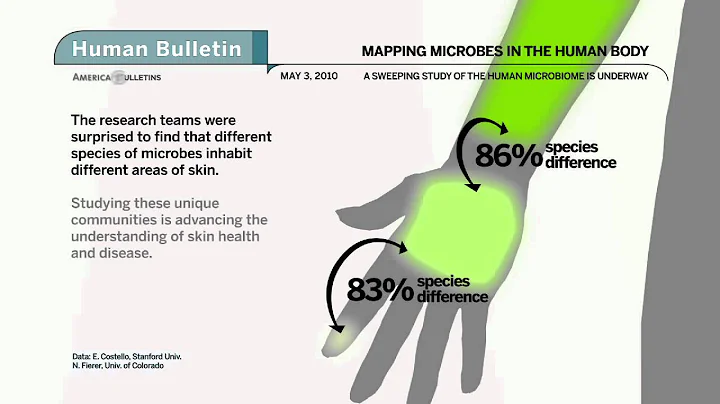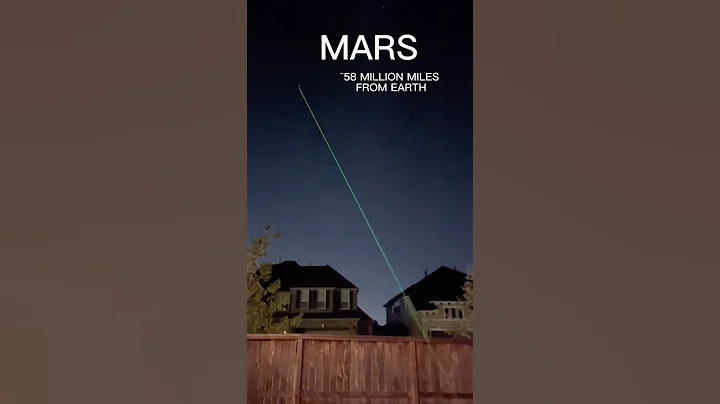Recently, the National Experimental Research Group of the United States published an article in the magazine "Science " stating that they have discovered the largest ultra-long bacteria on earth, with a body length of up to two centimeters. This research result has caused a stir. discussion. What is the concept of two centimeters of bacteria?
We must know that ordinary bacteria are invisible to the naked eye. The length of ordinary bacteria is only 1/500 mm, and this bacterium is so big that we can see it with the naked eye. This discovery can be said to overturn our understanding of traditional bacteria. Cognition has increased the upper limit of our understanding of bacterial size by ten times, undoubtedly opening a new door to the exploration of bacterial morphology. How was this bacterium

discovered? The discovery of the bacterium
was actually an accident. This bacterium was discovered by Professor Gros as early as 2009, when he came to a mangrove in the Caribbean to study the local marine mangrove system. One day he went to the red forest to explore the substances in the sediments. accidentally discovered some kind of milky white filaments on some leaves. Later, he also found this kind of filaments on some sediments, shaped like a thin rope. .
At this time, Professor Gros' curiosity was suddenly aroused, and he took the sample back for study. When was discovered, it was thought to be a fungus, but after five years of research, it was discovered that it was actually a bacterium. Professor

silvina said in the interview that he sequenced the gene of this organism at that time and found that they have 11 million bases, including 11,000 genes that can be clearly distinguished. and ordinary bacteria only have an average of 4 million bases and 3900 genes . Because they were so big, they were assumed to be eukaryotes and not bacteria at all. But what is certain is that the first impression this creature gave him was unique enough. It looked like an enlarged single cell.
After determining its attributes, in order to highlight its magnificence and huge size beyond ordinary bacteria, we chose to name it ca.thiomargarita magnifica, a combination of the Latin word for huge Magnus and the French word magnifique for magnificence. , translated as sulfur bacteria.

Cells are single-cell prokaryotic microorganisms that can be found anywhere on the earth. We coexist with bacteria. Washing hands before meals and after using the toilet can also reduce the entry of bacteria into the body. The ancestors of today's bacteria appeared on Earth about 3.5 billion years ago. cytoplasm is the basis of bacterial cells and contains circular DNA as genetic material.
is different from eukaryotes in that the DNA of prokaryotes does not bind to proteins . The cytoplasm is wrapped in the cell membrane. The cell wall is tough and hard. It is composed of proteins and polysaccharides and can provide structural support for bacterial cells. and protection. Outside the cell wall is the capsule , which is mainly composed of polysaccharides, which can protect bacterial cells and is the culprit of host diseases caused by some bacteria. Some bacteria are capable of active movement through their flagella.

Bacteria have excellent adaptability and reproductive capacity, which is why they are so ubiquitous. bacteria can reproduce both sexually and asexually. If binary splits into , it is asexual reproduction, which will eventually produce a large number of single-cell bacteria. Bacteria come in many shapes, including spheres, rods, and spirals. Bacteria called cocci can occur singly, in pairs, or in chains, and many of the bacteria that cause purulent infections or pneumonia are cocci.
Rod-shaped bacteria are called bacilli . Bacilli can be harmless, such as Lactobacilli used in the food industry. Of course, many bacilli can also cause disease. We often hear the term E. coli . In fact, this is also a type of bacillus. The methods currently used for bacterial grouping are mainly Gram staining . According to the different cell wall structures of different types of bacteria, the staining is also different. What is the difference between the Sulfothococcus pallidum discovered this time and ordinary bacteria?

Thiulfondocha pallidum
The discovery of Thiourondocha pallidum is of great value. This giant among bacteria has a huge genome and is wrapped in a membrane. generally only has this feature in more complex creatures like humans. Bacterial DNA generally floats freely in cells. Life is generally divided into two categories: prokaryotes and eukaryotes. The former includes bacteria and single-celled microorganisms known as , which have floating DNA, and various cells in the world that we come into contact with in our daily lives belong to eukaryotic.

The latter can do things that the former cannot, such as vesicles, which divide various cellular functions into organelles and thereby control molecular movement. Sulfothococcus pallidum blurs the boundaries between prokaryotes and eukaryotes. It is difficult to determine which category it should belong to. has become the first membrane-bound organism in the way of eukaryotes. Bacteria whose genetic material is clearly isolated in their organelles.

Although it is still a kind of bacteria, because its cells have membrane vesicles that wrap DNA, this nuclear membrane binding method is similar to that of eukaryotes. In addition, it also has a vacuole-like organelle that helps molecules move in and out. This "vacuole" is also an important reason why it is so big. Bacteria are often thought of as tiny and simple life forms, and some people call them protein bags, but this discovery may slowly change how humans think about bacteria.

When such a large bacterium is discovered, some people will also question, isn't this really created by the United States themselves?
Although the image of Lao Mei has always been unpopular in the hearts of Chinese people. But this time it really wasn't what they were researching. Otherwise, it would be impossible to invent a living creature. If this kind of super-cognitive thing could be developed and used to harm people in the United States, it would mean that American technology has been crushing the world for decades or hundreds of years. In fact, before the discovery of the ornate sulfur bacteria, large-sized bacteria were also discovered. In 1997, German experts discovered bacteria that could be observed with the naked eye in Namibia in Africa.

Namibia Pearl Sulfur Bacteria
The productivity of microorganisms in Namibia is very high. The soil on the seabed is also in an anoxic state, and there is a lot of sulfur in an anoxic state. During the research process, the researchers discovered a kind of sulfur bacteria . is about 3/4 mm in size, which is equivalent to the bacteria of a fly, and can be observed with the naked eye. later named it Sulfur Pearl Fungus of Namibia, because this bacteria contains sulfur, so it can look like a pearl.
It is mainly distributed in the anaerobic environment of continental shelf . It relies on oxidizing sulfur and reducing nitrate . After dissecting Namibian sulfur pearls, researchers discovered that their interior is actually a vacuole, which is mainly used to store large amounts of nitrates. Namibia was so happy after the discovery of such a large bacterium that it even issued a commemorative stamp bearing the image of the bacterium.

bacteria and then add some other large single-celled organisms. Brefeldia maxima (Brefeldia maxima, a generalized slime mold with a surface area exceeding 1 square meter), Fragile scale insect (Syringammina fragilissima, a deep-sea foraminifera with a length up to 20 cm), Caulerpa prolifera (Caulerpa prolifera, a Pteridophylla located in the Mediterranean , the longest can exceed 3 meters) and so on. In fact, the microbial world is just like the objective world with our naked eyes, with a variety of organisms. It is complex and very interesting.





















